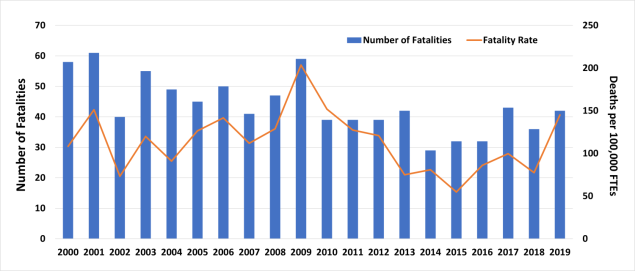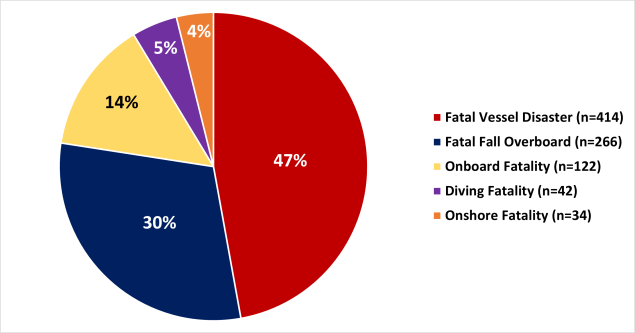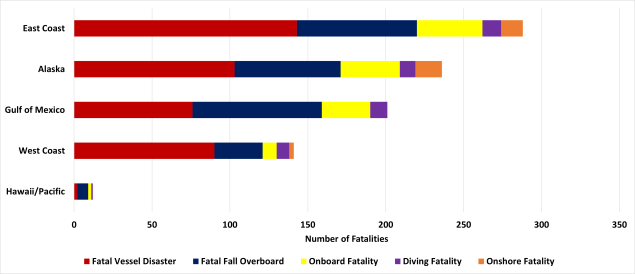Regions: National Overview

Commercial fishermen hauling a crab pot on deck in the Bering Sea. Photo by Johnathan Hillstrand
Commercial fishing is one of the most dangerous occupations in the United States. Many commercial fishing operations are characterized by hazardous working conditions, strenuous labor, long work hours, and harsh weather. In 2019, commercial fishermen experienced work-related fatalities at a rate over 40 times higher than the average worker.1
NIOSH maintains the Commercial Fishing Incident Database (CFID), a system tracking work-related fatalities in the United States commercial fishing industry. A review of the data from 2000-2019 found that:
- 878 commercial fishermen died from a traumatic injury while fishing in the U.S., averaging over 43 deaths per year.
- Nearly half of all fatalities (414, 47%) occurred after a vessel disaster.
- Another 266 (30%) fatalities were due to falls overboard.
- Another 122 (14%) fatalities resulted from injuries sustained onboard.
- The remaining 76 (9%) fatalities occurred while diving or from onshore injuries.
By region, most fatalities occurred on the East Coast (288, 33%), followed by Alaska (236, 27%), Gulf of Mexico (201, 23%), West Coast (141, 16%), and Hawaii/Pacific (12, 1%).

1Fatality rates were obtained from the Bureau of Labor Statistics Census of Fatal Occupational Injuries. All other data presented were obtained from the NIOSH Commercial Fishing Incident Database.


